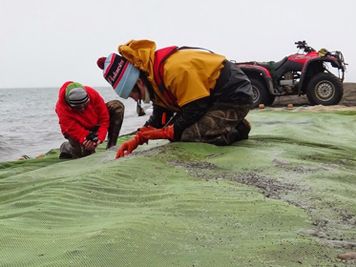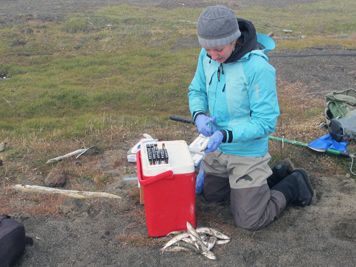NOAA's Sampling Guidelines for Arctic Oil Spill Damage Assessments
The NOAA Office of Response and Restoration's Assessment and Restoration Division has developed a series of sampling guidelines for collecting high-priority, time-sensitive, ephemeral data in the Arctic after an oil spill to support Natural Resource Damage Assessment (NRDA) and other oil spill science.
Download the guidelines: Guidelines for Collecting High Priority Ephemeral Data for Oil Spills in the Arctic in Support of Natural Resource Damage Assessments [PDF, 4.8 MB] These guidelines improve our readiness to respond to an oil spill in the Alaskan Arctic. They help ensure we collect the appropriate data, especially immediately during or after a spill, to support a damage assessment and restoration to help the coastal environment recover. Our Arctic ephemeral data collection guidelines include the following:
- sampling objectives
- sampling equipment list
- considerations to address before going into the field
- detailed sampling strategies and methods
- field data sheets
We have developed seventeen guidelines for collecting data from environmental media, nearshore habitats and their associated biological communities, and biological resources. Also within this document, we have updated general guidelines for chain of custody and photography for NRDA and developed recommendations for alternative sampling equipment and methods to address what to do if certain required equipment, facilities, or conditions—such as preservatives for tissue samples—are not available in remote Alaskan Arctic locations. These guidelines are focused, concise, detailed, Arctic-specific, and adaptable. They are intended to be adapted to spill-specific conditions and used by NRDA personnel and other scientists doing baseline data collection or collecting samples for damage assessment and oil spill science, including emergency responders.
Learn More
Read more about and see photos from the field development of these guidelines:
Frozen Hands and Muddy Lagoons: Lessons from Summer Sampling in the Arctic, August 2013
When the Clock Is Ticking: NOAA Creates Guidelines for Collecting Time-Sensitive Data During Arctic Oil Spills, September 2014
 An official website of the United States government.
An official website of the United States government. 

